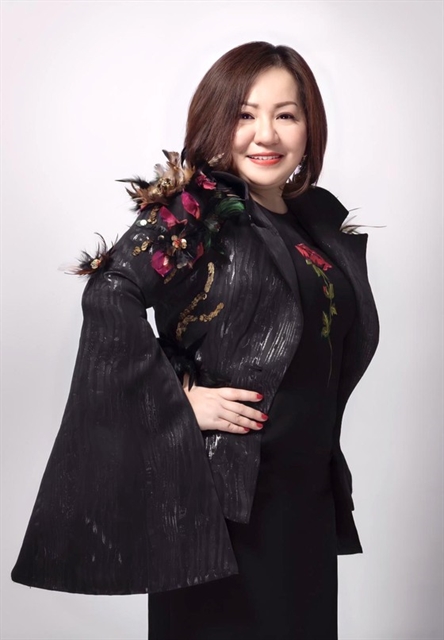[ad_1]

Lê Quỳnh Trang, chairperson of Việt Nam International Fashion Week (VIFW), has recently been appointed chair of the Council of the ASEAN Fashion Designers (CAFD). Trang was interviewed recently by Sài Gòn Giải Phóng (Liberated Sài Gòn) newspaper and shared her thoughts about the Vietnamese fashion industry.
Congratulations on becoming chairperson of the CAFD. Can you talk more about the CAFD and the development of the fashion industry within ASEAN?
CAFD is a non-profit organisation with a mission to foster cooperation in the fashion field within ASEAN countries and promote the fashion industry to a higher level of success. This is the first fashion council to be established by the ASEAN Secretariat with an aim to assist designers in brand development and business implementation. The fashion industry within ASEAN is expected to see significant growth in times to come.
ASEAN is a potential fashion market with many creative designers. It is positive that CAFD can take ASEAN fashion to a whole new level like other developed fashion regions. What activities have you planned for the CAFD?
The first thing that I will do when officially becoming a chairman is to focus on researching and selecting key personnel in each Southeast Asian country. The bridge that they create is beneficial for determining outstanding local designers for the council. Participating fashion designers will have the opportunity to launch their mini-collections, and CAFD will join hands to promote them via photos and videos.
The new mobile application called AFAB (Asean Fabulous) will be introduced as well. This application helps showcase talented designers and further spreads information about their collections within the region and even globally. Designers are not required to pay a fee to become a member of CAFD; and Việt Nam will be the first country to have collections launched on AFAB app. I believe that the products of Vietnamese designers will be embraced by international friends.
Where is Việt Nam on the regional and global fashion map?
Prior to VIFW held in 2014, Vietnamese fashion was almost invisible to the world. I am glad that this has changed after 10 seasons of VIFW. Việt Nam has gradually made a statement on the regional and global fashion map. We have many advantages compared to other countries. We are a market with a substantial population. This is a competitive advantage of Việt Nam, not only for the fashion industry but for other economic sectors.
Besides, many manufacturing factories with quality infrastructure can be found in the country. In fact, Việt Nam is one of the largest producers of garment products for many well-known fashion brands in the world. Our workforce is young, and local tastes have gradually adapted to new elements of global fashion. Vietnamese fashion definitely holds an important position within the region and in the world.
What are the advantages and challenges that Vietnamese fashion designers encounter when working in an international environment?
Vietnamese designers have benefited from the advantages of our fashion industry. They are very creative, especially designers Nguyễn Công Trí and Phương My, who were highly praised after their collections were launched at many international fashion weeks.
That being said, poor language skill is one of the major disadvantages that Vietnamese designers have encountered when entering the international fashion market. Lack of hustle and professional experiences are other barriers. Therefore, it is important for organisations such as CAFD to create more chances for local designers to learn the very best of world fashion.
Can you share some highlights as well as the limitations of the local fashion industry?
VIFW has positively changed people’s perception of the local fashion industry in recent years. Many Vietnamese designers, such as Nguyễn Công Trí, Phương My and Thuỷ Nguyễn, have made a good impression on international customers. This local industry has gradually been “shaped” and is on the rise. I am also glad that local fashion consumers have formed a habit of embracing Vietnamese products, “Vietnamese people use Vietnamese goods”, instead of purchasing fashion pieces from China, as they used to do. An open and dynamic economy is another important factor that boosts the growth of Việt Nam’s fashion market. Various made-in-Việt Nam brands have recently been introduced and are well-loved by the public.
However, the biggest limitation that the local fashion market has faced, in my humble experience, is the lack of proper investment in fashion- and design-related activities from the Government. We have invested in the development of manufacturing factories for overseas companies but have not focused on the local market. Many hundreds-year-old craft and silk villages that offer support for raw materials have not been taken care of, while passionate and young designers have not been given quality training that would help them catch up with the world. We have yet to create a link between key fashion ‘knots’, from raw materials, factories, processing and design to communication and brand promotion. With that said, it will take some time to solve these problems and introduce more Vietnamese fashion brands to the world.
At the moment, we have scheduled meetings with the Ministry of Industry and Trade to promote the establishment of the Việt Nam Fashion Association as an organisation that represents all units operating in the fashion field in Việt Nam. In the time to come, I hope the Government will invest and pay more attention to the fashion industry to help secure our place on the regional and global fashion map. — VNS
[ad_2]
Source link
